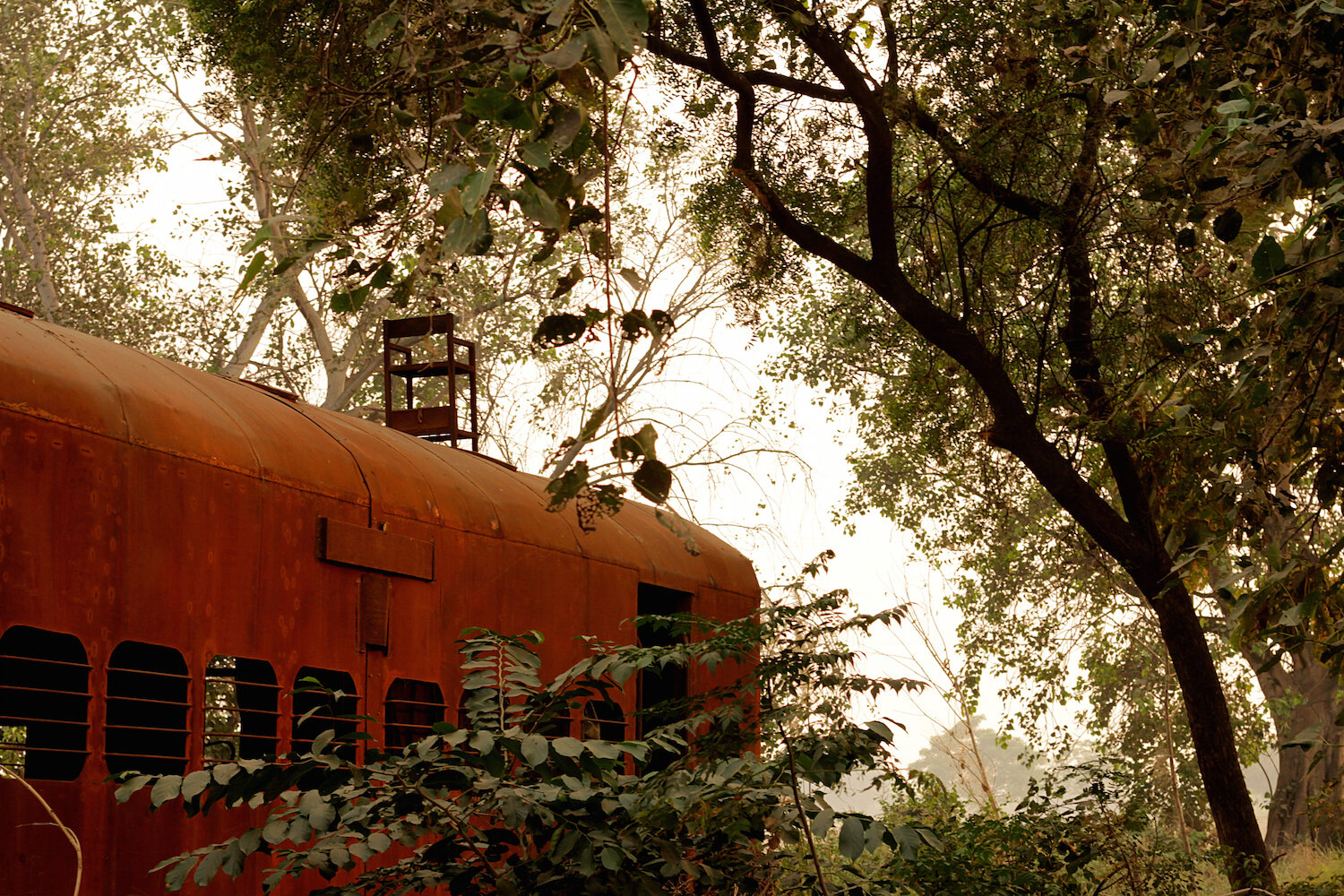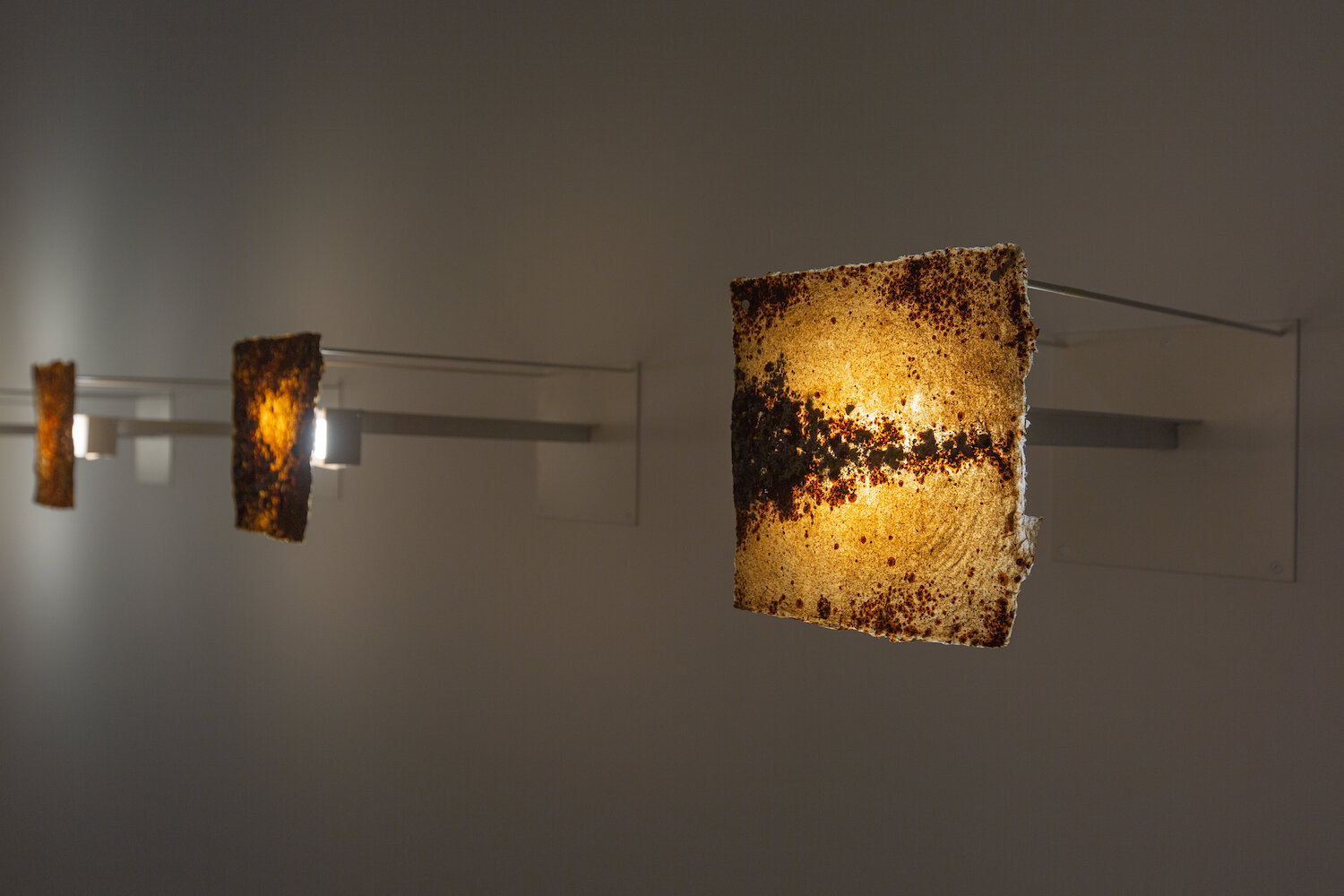A Review of Amar Kanwar: Such a Morning
/Installation view: Amar Kanwar, Letter 7, 2017, 4 digital video back-projections, 49 handmade ramie, cotton and banana fiber papers. Courtesy of the artist and Ishara Art Foundation. Photograph by Ismail Noor | Seeing Things.
As the art world adapts to the Coronavirus crisis by launching online galleries and virtual exhibition walkthroughs, Monsoon Malabar commissioned Abhimanyu Arni – a writer in London – to review Ishara Art Foundation's exhibition, Amar Kanwar: Such a Morning, that is available for viewing online.
Such a Morning is a feature-length film installation that narrates a modern fictional story about an ageing mathematics professor who retreats from his career to live in isolation in an abandoned train carriage. Searching for a way to re-comprehend the difficult times we are living in, the professor records his epiphanies and visions in an almanac of the dark – an examination of 49 types of darkness that emerge as a series of letters, which are presented alongside the film as an installation.
Viewing an exhibition online is something that would have been thought to be a poor substitute: a gimmick at best, or a cost-saving marketing ploy at worse. Art in the time of Covid-19 imposes a new tolerance to a life online and given that so much online content is highly commercialised, or else trivia, prurient or sensational, the experience of visiting a virtual gallery, is unexpectedly enriching, through its required slowness and deliberateness. Gone is the ritual of entering a gallery space, the ritual that follows the rules and contours of the gallery’s imposed silence, it’s presumed seriousness of purpose, it’s suspension of ordinary rules. You gain an immediacy and an ease. You do not need to share this aesthetic space with ringing mobile phones, coughs and a group of schoolchildren standing in front of the work you want to see. The art needs to be powerful, however, to contend with the flat banality of the screen, the competing windows and the incompleteness of attention that we often give things that can be summoned up again by simply pressing “back.” Amar Kanwar’s art has this power to arrest and the images onscreen stay in memory, but more immediately they summon up a line of writing that’s power has only increased in the age of the internet.
“I went to the woods because I wished to live deliberately, to front only the essential facts of life, and see if I could not learn what it had to teach, and not, when I came to die, discover that I had not lived.”
No work of art that addresses questions of renunciation, or the process of becoming more deeply acquainted with nature can escape the snares of Thoreau’s resonating lines. Kanwar’s sparse and vivid work asks of us, and of Thoreau, what is it about nature, about life in the wilderness, that is particularly deliberate. The requirements of life in the wild impose an even harsher, more demanding and more authoritarian structure on our lives, yet we are drawn to it out of a strange desire to be free. Longings are often contrary, contradictory, and yet powerful because they cannot be parsed or squared away by logic, and yet there is an underlying meaning: It is to deny any other human any agency in the direction of our lives that we achieve a degree of freedom in the wild.
Installation view: Amar Kanwar Such a Morning, 2017. Courtesy of the artist and Ishara Art Foundation. Photograph by Ismail Noor | Seeing Things.
Installation view: Amar Kanwar: Such a Morning, Marian Goodman Gallery, New York, 2018. Photography by Cathy Carver
Kanwar’s choice of a railway carriage is powerful. In a conscious or unconscious echo of Sean Penn’s great film Into the Wild which retells the true story of a young American’s process of total withdrawal into the wild, the character comes to occupy an abandoned vehicle (in the film, it is a school bus, and in Kanwar’s work it is a railway carriage). This reminds us that we cannot completely abdicate our common humanity. We wear clothes weaved by others, and must occupy habitations that were either made by, or patterned after, the designs of others. This becomes a double ambiguity: we belong to humanity but long to be free of any control by other humans. In Anwar’s work this ambiguity is an unsettling provocation that established a permanent tension prevents the art from ever settling on a simple representation of nature as crudely savage, or merely picturesque. More importantly, it is a reminder that this is a journey, a voyage. These are the stationary ships of the Odyssey inwards, and their achingly familiar shape: the school-bus and the railway train, haunt us by their familiarity remade into perfect strangeness.
Detail view: Amar Kanwar, Letter 7, 2017. Courtesy of the artist and Ishara Art Foundation. Photograph by Ismail Noor | Seeing Things
The theme of a journey outwards is well conveyed in the installation accompanying the film: shards of luminous objects alongside elusive but powerful fragments of text. They harbour the mystery, excitement, fear, jealousy and relief that is reminiscent of those crackling transmissions from the early Apollo missions: We would not undertake this journey ourselves, but are excited by the lambent clues that are gifted back to us from the outer envelope of these experiences, are jealous of them, but relieved that the fierce process that produced them is not visited upon us, to remake us, or unmake us.
The choice of a mathematics professor is profoundly clever. There is an almost-Nabokovian sense of a coruscating intellect that is being increasingly shaken loose by its own power or perhaps an inherent, hidden flaw. We trust his judgement, we are born along by the processes of his own mind, to a place of profound illogic: the realm of sharp, unnerving, brilliant experiences that come of a beautiful mind that has come to be entirely dislocated.
Detail view: Amar Kanwar, Letter 7, 2017. Courtesy of the artist and Ishara Art Foundation. Photograph by Ismail Noor | Seeing Things
Detail view: Amar Kanwar, Letter 7, 2017. Courtesy of the artist and Ishara Art Foundation. Photograph by Ismail Noor | Seeing Things
This work also sits at a fertile cross-current between western renunciation, and Indian asceticism which is sought at a late stage in life. In a sense, the professor is an artistic heir to Mahatma, who was profoundly exercised by Thoreau. The traditional renunciation of the Indian ascetic meets the rebellious transcendentalism of the romantic, anti-industrial West, that rejects the emerging crassness and dehumanisation of industrial capital.
Even online, the curation of this work is powerful: It is admirably self-conscious, an austerely anthropological presentation of an otherness. On the screen the contrast is amplified between the broken tawdry snowstorm of images that online life can be, and a slower, reasoned and deliberate life that draws its power and resonance from a reality that is beautiful but always ambiguous because it is uncompromisingly real. Despite the restrictions of encountering art online, I found myself being drawn and absorbed to Kanwar’s powerful, strange and vivid vision, and being drawn into myself which his work proves is the same as being led into the wild.
Amar Kanwar: Such a Morning is on view at Ishara Art Foundation – by appointment only – until 20 May 2020. Explore a virtual walkthrough of the exhibition on Alserkal Online.






